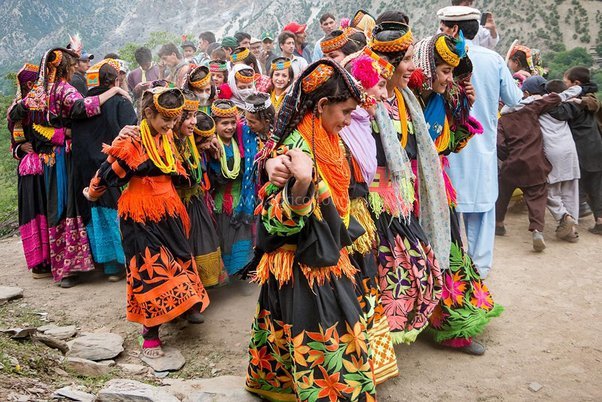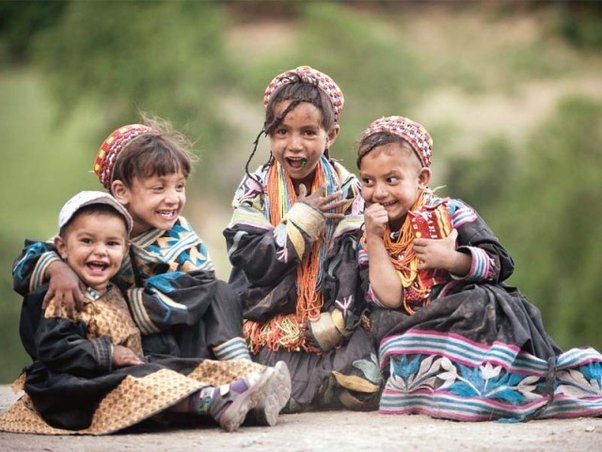India, a land steeped in ancient wisdom, culture, and traditions, holds within its vast history customs and rituals that often remain unexplored or lost to time. One such ritual, known as Chitrimas (No, it’s not a spelling mistake), offers a fascinating link between India’s ancient practices and the modern-day celebration of Christmas. Despite being largely forgotten in the mainstream Indian cultural landscape, Chitrimas also called Chawmos is still celebrated by the remote Kalash community in the rugged mountains of the Hindukush. This festival, not only marks the beginning of a New Year but also encapsulates the essence of festivity, renewal, and divine reverence.
In this blog, we explore the intriguing relationship between Chitrimas and Christmas, unraveling the historical, cultural, and religious threads that may tie the two celebrations together. We also delve into the significance of the Kalash people, their deep-rooted traditions, and why their rituals present a rare and valuable window into ancient Hindu life.

Table of Contents
The Kalash People: Guardians of Ancient Vedic Traditions
The Kalash people are considered one of the most ancient communities of the Indian subcontinent, holding onto customs that predate the modern era by an epoch. Interestingly, the Kalash are unique for their adherence to the ancient Vedic Lifestyle. While most contemporary Hindus have evolved away from these ancient practices, the Kalash still revere Indra, the Vedic deity of storms, war, and the heavens—an aspect of Hinduism that has long since faded from mainstream religious practices.
Among the rich array of rituals preserved by the Kalash, Chitrimas or Chawmos stands out as a testament to an ancient festival that bridges the gap between the natural world, the cosmic order, and the divine. This festival provides crucial insights into the ways ancient Hindus celebrated the changing of seasons, honored their deities, and marked the cyclical nature of time.

Chitrimas (Chawmos): A Festival of New Beginnings
The Chawmos festival, celebrated by the Kalash people to commemorate Winter Solstice during the winter months of December, is deeply connected to the seasonal cycle and the start of a new year. The process is heralded by the elders, who observe the sun’s position in the sky, signaling the cosmic shift. The young ones—boys and girls—take part in exciting ritual involving the lighting of massive bonfires on mountaintops. This marks a symbolic purification and preparation for the joyous public celebrations. A defining feature of the festival is the purification process for those deemed “impure,” which involves ceremonial fire rituals. Only those who have undergone purification can participate fully in the festival.
One of the most striking elements of the Chawmos celebration is the dramatic role reversal, where men dress as women and women as men, symbolizing the fluidity of gender in the spiritual realm. This mirrors the idea that Balimain, the central God of the festival, is considered both male and female, capable of changing forms at will.
The Tok tree plays a significant role in the festival as a place of worship, known as Indrunkot or “Indra’s place.” This tree is central to the festival’s sacred rituals, where young boys impersonate ancestors, and worshipers engage in symbolic acts of unity and renewal. As men and women divide into groups to sing traditional songs, the rhythm and tone of the music shift, reflecting the duality of life, death, and rebirth—key themes in ancient Hindu wisdom.
The Link Between Chitrimas and Christmas
So, how are Chitrimas (Chawmos) and Christmas related? The answer lies in the deep currents of ancient migrations and cultural continuity. Historical evidence points to a pivotal moment in ancient history—the Battle of Dasaraja, or the Battle of Ten Kings, as chronicled in the Rig Veda. This battle marked a defining shift when the Bharta Tribe, the ancestors of the modern-day Indian subcontinent’s dominant cultures, took control of the Indian mainland. However, the aftermath of this victory also led to the dispersion of the defeated tribes.
Following their defeat, the relinquised Hindu tribes of the Vedic world crossed the Hindukush mountains, heading westward into what is now the vast expanse of Eurasia. These tribes carried with them not just their language and culture, but also their deeply embedded spiritual practices and festivals. Over centuries, these migrating peoples spread across the continent, and it is this ancient migration that likely accounts for the striking similarities between the customs of the Indian subcontinent and the Indo-European cultures that baffel historians across the globe.
Kalash People were probably one of these tribes which settled in the remote regions of the Hindukush mountains, where they have preserved their ancestral traditions in an almost frozen time capsule—untouched by the encroaching influences of modernity and religious changes that were happening to their East and West. Among these preserved practices is the Chitrimas festival, which stands as a direct link to an ancient early Vedic tradition of the bygone era.
With the rise of Christianity in the Roman Empire, the Church embarked on a deliberate and systematic effort to formalize its doctrine and rituals. As part of this effort, in the 4th Centure AD, December 25th was officially designated as the birthdate of Jesus Christ. This date, however, was not arbitrarily chosen. It was strategically aligned with the ancient celebration of the Chawmos festival—a festival that marks the winter solstice and the renewal of the year. It is highly likely that, in their quest to assimilate the pagan populations of Europe, the Church intentionally co-opted and rebranded the ancient Chitrimas festival as Christmas, a process of cultural hijacking that served to solidify Christian dominance over pre-existing, deeply-rooted ancient spiritual traditions.
This act of appropriation is not an isolated case in history. It bears striking similarities to the modern-day trend to evangelize Hindu practices, such as Yoga and Meditation, by the the West without any acknowledgment of their Indian origins. These practices, which are at the heart of the Hindu spiritual tradition, are been commodified and stripped of their cultural and Dharmic identity. Yoga, for instance, has become a multi-billion-dollar industry in the West, with little to no credit given to its roots in ancient Hindu philosophy. The Church’s rebranding of Chitrimas into Christmas operated within the same paradigm—taking a significant cultural and spiritual tradition, repackaging it for mass consumption, and erasing its original context in the process.
In essence, the Christianization of Chawmos and the transformation of Chitrimas into Christmas represents a deliberate act of cultural genocide. By appropriating deeply rooted festivals and spiritual practices, the Church not only sought to replace indigenous beliefs but also to undermine the significance of the original traditions.
Thus, what we recognize today as Christmas may, actually, be a continuation of the ancient Vedic festival of Chitrimas celebrated by Eurpoeans in Pre-Christian era which is, still preserved in the far corners of the Indian subcontinent by the Kalash people
Conclusion: Tracing the Ancient Roots of Christmas
The celebration of Christmas is far more than just a Christian observance; it may, infact be, a repackaged continuation of an ancient tradition that originated in India, the world’s most ancient civilization. By tracing the roots of the Chitrimas festival, we uncover a critical connection between ancient Hindu customs and the modern celebration of Christmas. As we continue to celebrate the holiday season, it is essential to acknowledge the origins of these customs and give due credit to the cultures from which they were borrowed. Failing to do so is nothing short of cultural plagiarism—an erasure of history and a denial of the rich, foundational contributions that ancient cultures have made to the modern world.
Merry Chitrimas and a Happy New Year.
